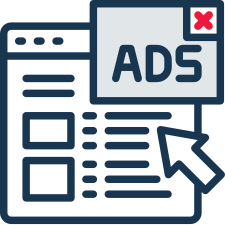What is NPS?
National Pension System (NPS) is a pension cum investment scheme launched by Government of India to provide old age security to investors. NPS is a market-linked defined contribution scheme that helps you save for your retirement. The scheme is simple, voluntary, portable and flexible.
Also read: Low charges, high returns, income tax benefits — 5 reasons to choose NPS for retirement planning
In accordance with the most current National Pension System laws, members will be able to withdraw up to 25% of the money they individually contribute to their accounts beginning on February 1, 2024, once three years have elapsed after the account was created. The employer's contribution, if any, and any returns earned on the contributions should not be included in the partial withdrawal.
What is partial withdrawal in NPS?
An NPS member can withdraw partial withdrawals from their retirement funds to meet certain requirements without compromising their monthly stipend upon retirement. The maximum amount that subscribers may withdraw is 25% of their individual payments, less returns and any employer contributions, in accordance with Pension Fund Regulatory and Development Authority (PFRDA) laws.Also read: How NPS investment of Rs 50,000 can help you save more income tax
When can NPS member apply for partial withdrawal
To make a partial withdrawal from NPS, the subscriber must:- Have 3+ years of account tenure
- Subscribers can withdraw only up to 25% of their own contributions according to NPS partial withdrawal rules
- Subscribers can make a maximum of 3 partial withdrawals in their NPS account lifetime as per PFRDA rules
Following the initial withdrawal of NPS Partial funds, only incremental contributions following the last withdrawal date will be considered.
How can you make partial withdrawal from NPS?
An NPS subscriber needs to submit the withdrawal request along with a self-declaration stating the purpose for the withdrawal. This submission has to be done to the central record-keeping agency (CRA) through the government nodal office or point of presence. In the case a subscriber suffering from any illness specified in the master circular is unable to submit the form because of the illness, the withdrawal request can be submitted by any familiar member.Reasons for when you can avail partial withdrawal
- The allowed purposes for NPS partial withdrawal are:
- Children's higher education fees (legally adopted too)
- Children’s marriage expenses (legally adopted too)
- Buying/constructing a residential house/flat
- Treatment for specified critical illnesses
- Disability/incapacitation expenses
- Support skill development and self-employment opportunities
- To establish own venture or start-ups
Eligible for tax exemption on the amount withdrawn upto 25% of the self contribution, on such terms and conditions as may be specified by PFRDA under section 10(12B).
(Catch all the Personal Finance News, Breaking News, Budget 2024 Events and Latest News Updates on The Economic Times.)
Subscribe to The Economic Times Prime and read the ET ePaper online.
Read More News on
(Catch all the Personal Finance News, Breaking News, Budget 2024 Events and Latest News Updates on The Economic Times.)
Subscribe to The Economic Times Prime and read the ET ePaper online.


 Get Unlimited Access to The Economic Times
Get Unlimited Access to The Economic Times






